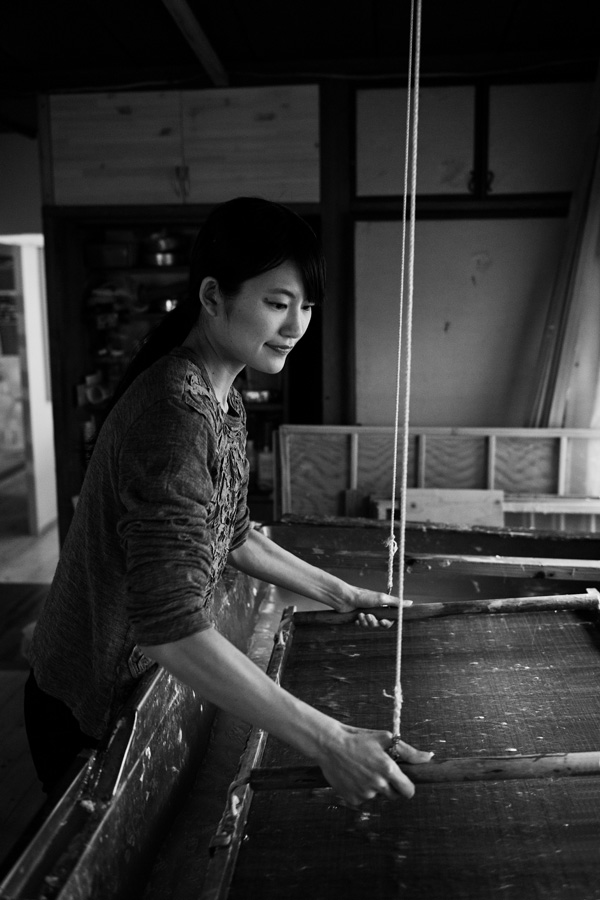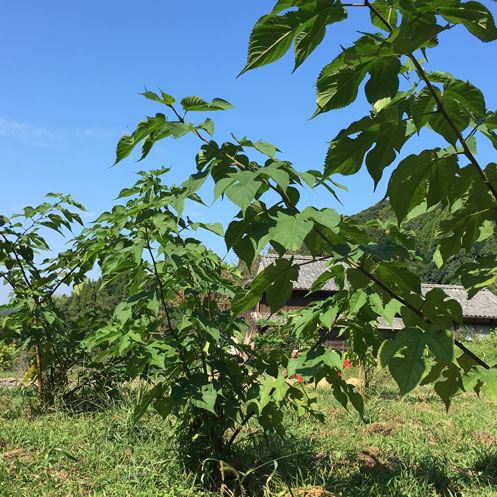ENGLISH

Keiko Haraguchi
Washi (Japanese paper) designer.
I grew up in nature-rich Kagoshima in Japan.
After graduating from Kagoshima Prefectural College,
I studied architectural design in Denmark. Through my stay in Denmark, I noticed the wonder of Washi which is a traditional Japanese culture.
I began learning washi in 2011 and became independent in 2014.
Currently I mainly make modern Washi in architectural space.
Contact:
studio@satsumawashi.com
+81 90 8915 6846
1-12-20 Kamoike, Kagoshima-shi, Kagoshima 890-0063 Japan
Washi (Japanese paper) designer.
I grew up in nature-rich Kagoshima in Japan.
After graduating from Kagoshima Prefectural College,
I studied architectural design in Denmark. Through my stay in Denmark, I noticed the wonder of Washi which is a traditional Japanese culture.
I began learning washi in 2011 and became independent in 2014.
Currently I mainly make modern Washi in architectural space.
Contact:
studio@satsumawashi.com
+81 90 8915 6846
1-12-20 Kamoike, Kagoshima-shi, Kagoshima 890-0063 Japan
Photo: Stusio WORK
About Washi
The mening of "Washi" is, "Wa" means japanese, "shi" means paper.
"Washi" is generally tougher than ordinary paper made from wood pulp, and is used in many traditional arts like Ukiyo-e, Origami and Shodo(carigrafi). "Washi" is produced in a way like ordinary paper, but rely on manual methods.
The mening of "Washi" is, "Wa" means japanese, "shi" means paper.
"Washi" is generally tougher than ordinary paper made from wood pulp, and is used in many traditional arts like Ukiyo-e, Origami and Shodo(carigrafi). "Washi" is produced in a way like ordinary paper, but rely on manual methods.

The material of “Washi”- Kouzo (Mulberry) tree
When we use the Kouso tree, we keep the trunk and cut just new branches. New branches will grow on the trunk every year, so nature will continue for generations.
The method of producing material
① Peeling the bark of the Kouzo tree.
② Shaving the black part of the bark.
The bark becomes white.
③ Boiling the bark with lye for a few hours, and it becomes soft.
④ Putting the bark in running water to remove the lye.
⑤ Any remining impurities in the barks are removed by hands.
⑥ The bark is laid on a rock or board and beaten with wooden hammer until it becomes fiber.
It takes a long time prepering to produce Washi.
My washi paper producing method is "Nagashi-suki"
I put the fiber in water with Neri, which is a mucilaginous material made from the roots of the Tororoaoi plant.
I scoop the fiber on a net and shake the net to mix and spread the fibers evenly. The Nagashi-Suki method can produce a thinner and tougher papaer.
When you see "Washi" or touch "Washi", you can feel the warmth of "Washi", because of its conetion with nature especially through the light.
When we use the Kouso tree, we keep the trunk and cut just new branches. New branches will grow on the trunk every year, so nature will continue for generations.
The method of producing material
① Peeling the bark of the Kouzo tree.
② Shaving the black part of the bark.
The bark becomes white.
③ Boiling the bark with lye for a few hours, and it becomes soft.
④ Putting the bark in running water to remove the lye.
⑤ Any remining impurities in the barks are removed by hands.
⑥ The bark is laid on a rock or board and beaten with wooden hammer until it becomes fiber.
It takes a long time prepering to produce Washi.
My washi paper producing method is "Nagashi-suki"
I put the fiber in water with Neri, which is a mucilaginous material made from the roots of the Tororoaoi plant.
I scoop the fiber on a net and shake the net to mix and spread the fibers evenly. The Nagashi-Suki method can produce a thinner and tougher papaer.
When you see "Washi" or touch "Washi", you can feel the warmth of "Washi", because of its conetion with nature especially through the light.
2018 © SATSUMAWASHI STUDIO
